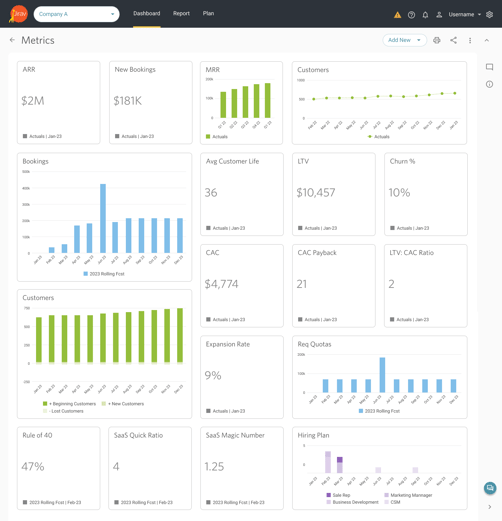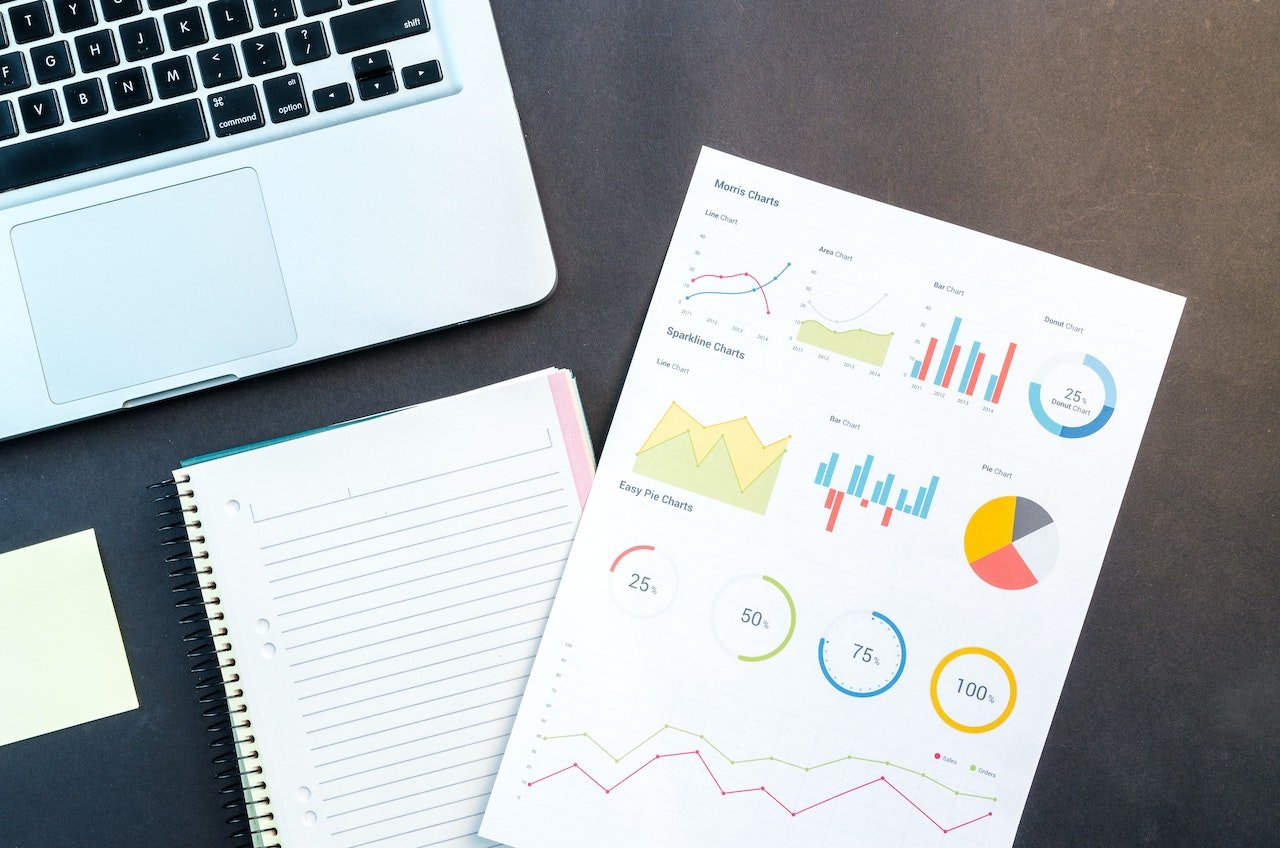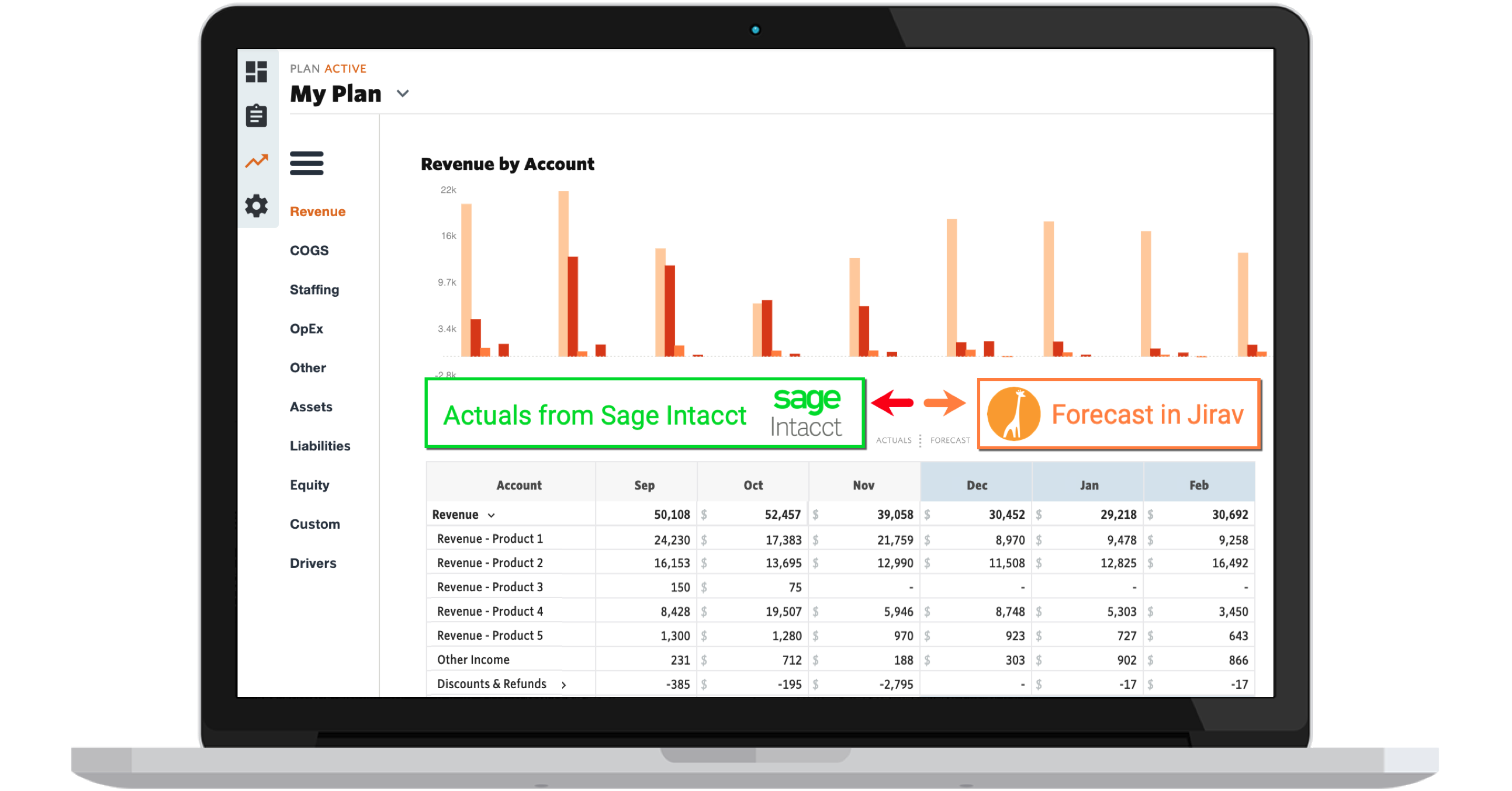Many companies rely heavily on forecasting to predict their future revenue and plan accordingly. Whether it's navigating sudden market changes, seasonal fluctuations, or competitor challenges, skillful forecasting can help businesses remain agile and adapt.
When it comes to SaaS businesses, accurate revenue forecasting is particularly critical for making informed decisions about investment and capital allocation. However, forecasting in this industry can be challenging, given its rapidly changing nature.
In this article, we'll take a closer look at SaaS sales forecasting - what it is, why it's essential, and how to perform it effectively.
- What is SaaS sales forecasting?
- What is a SaaS forecast model?
- SaaS Sales Forecasting vs. SaaS Revenue Forecasting: What's the difference?
- How to perform SaaS sales forecasting?
What is SaaS sales forecasting?
SaaS sales forecasting is predicting future revenue by analyzing historical data, current trends, and other relevant factors that affect a business.
The goal of sales forecasting is to provide a reliable estimate of how much revenue a company can expect to generate over a specific period, typically a quarter or a year, by analyzing data in financial forecasting models.
Although sales forecasting can be complex, involving a time-consuming process of collecting and analyzing a significant amount of data, it is a critical part of any business, especially early-stage SaaS startups.
Nonetheless, forecasting is not just about predicting numbers; even the most sophisticated revenue forecasting models still require human input at some point. It requires a combination of historical data, future assumptions, and professional judgment to empower you and your team to continually assess whether what you're doing is taking the business where it wants to go.
Forecasting is valuable, because it assists with decision-making and future planning. A good forecast informs decisions by reviewing past sales figures, conducting market research, and social listening, among other methods, to manage business growth, appeal to investors, and create a revenue model that accurately reflects business goals. Investors want to see reliable financial projections, including your revenue forecast, to understand when the company will become cash-flow positive in the long run.
What is a SaaS forecast model?
Creating a SaaS forecast model involves taking into account several key components, including annual recurring revenue (ARR), cost of sales, operating expenses, working capital, deferred revenue, fixed assets, and debt/equity financing. SaaS forecasting models take all these components and analyze them to provide a clear and accurate picture of the company's financial health.
When determining which forecasting model is right for a SaaS company, there are three basic models to choose from:
Qualitative forecasting involves making predictions based on non-numerical data, such as industry knowledge, trends, market research, and surveys.
Time series analysis is a quantitative forecasting method that relies on comparing data from one period to another, usually over multiple years. It’s most effective when the product's trends are stable and there is a sufficient amount of data available for comparison.
Causal forecasting, on the other hand, predicts the relationship between variables using various methods and data sets. This method relies on identifying cause-and-effect relationships between the variable being predicted and other identified variables.
Choosing the right one for your business depends on various factors, including the amount of data available and the size of the company. For example, time-series analysis is effective when you have years of data to compare, while causal forecasting works best when considering multiple different variables.
Overall, investing in a reliable financial forecast method is vital for any SaaS business to provide a clear and accurate picture of financial health and growth potential.

SaaS Sales Forecasting vs. SaaS Revenue Forecasting: What's the difference?
Accurate SaaS sales forecasting is a crucial aspect of running a successful business, but how does a company go about it? Here we'll discuss how to accurately predict sales and explain why the LTV: CAC ratio is essential for accurate forecasting.
Step 1: Gather Historical Data
To perform accurate sales forecasting, you need to have access to historical data. This includes data on the number of units sold, customer acquisition costs (CAC), customer lifetime value (LTV), and churn rate. Historical data analysis can provide valuable insights into the trends and patterns of your business, including seasonality, market demand, and customer behavior. You can use this data to identify key performance indicators (KPIs) and make informed decisions about future sales projections. The more historical data you have, the more accurate your forecast will be.
Step 2: Determine Your Sales Cycle
The sales cycle refers to the time it takes to close a deal, from the initial contact with a potential customer to the signing of a contract. Knowing your sales cycle is key to forecasting sales accurately. For example, if your sales cycle is six months, you should be forecasting sales six months in advance.
Step 3: Calculate Your LTV: CAC Ratio
The LTV: CAC ratio is the lifetime value of a customer divided by the cost of acquiring that customer. This ratio helps you understand the long-term profitability of your customer acquisition efforts. If your LTV: CAC ratio is less than 1, it means you’re spending more to acquire a customer than the customer is worth to your business. This would indicate the need to reevaluate your sales and marketing strategies to improve the ratio.
Step 4: Develop a Sales Forecasting Model
Once you’ve gathered historical data, determined your sales cycle, and calculated your LTV: CAC ratio, you can develop a sales forecasting model via any of several different methods:
- Pipeline Method: Tracking the number and value of deals in your sales pipeline and predicting which deals are most likely to close within a specific time frame.
- Historical Trend Analysis: Analyzing historical data and extrapolating trends to predict future sales.
- Opportunity Method: Identifying potential new business opportunities and estimating the likelihood of closing those deals.
Step 5: Project Future Revenue
This involves using your historical data and KPIs to make informed assumptions about future sales projections. You can use various forecasting methods, such as linear regression or time-series analysis, to estimate future revenue based on your past performance. Linear regression is a statistical method used to determine the relationship between two variables, like revenue and a particular KPI. Time-series analysis involves identifying trends, patterns, and seasonality in your historical data and using this information to make predictions about future revenue.
SaaS sales forecasting is crucial to business growth; however, performing accurate forecasting can be time-consuming and complex. With Jirav, you can automate the process, saving you time and resources, while providing you with accurate and reliable insights.
Our solution simplifies forecasting, allowing you to focus on strategic decision-making and achieving your revenue goals. If you're interested in learning more about our tool and how it can benefit your business, book a call with us today.












